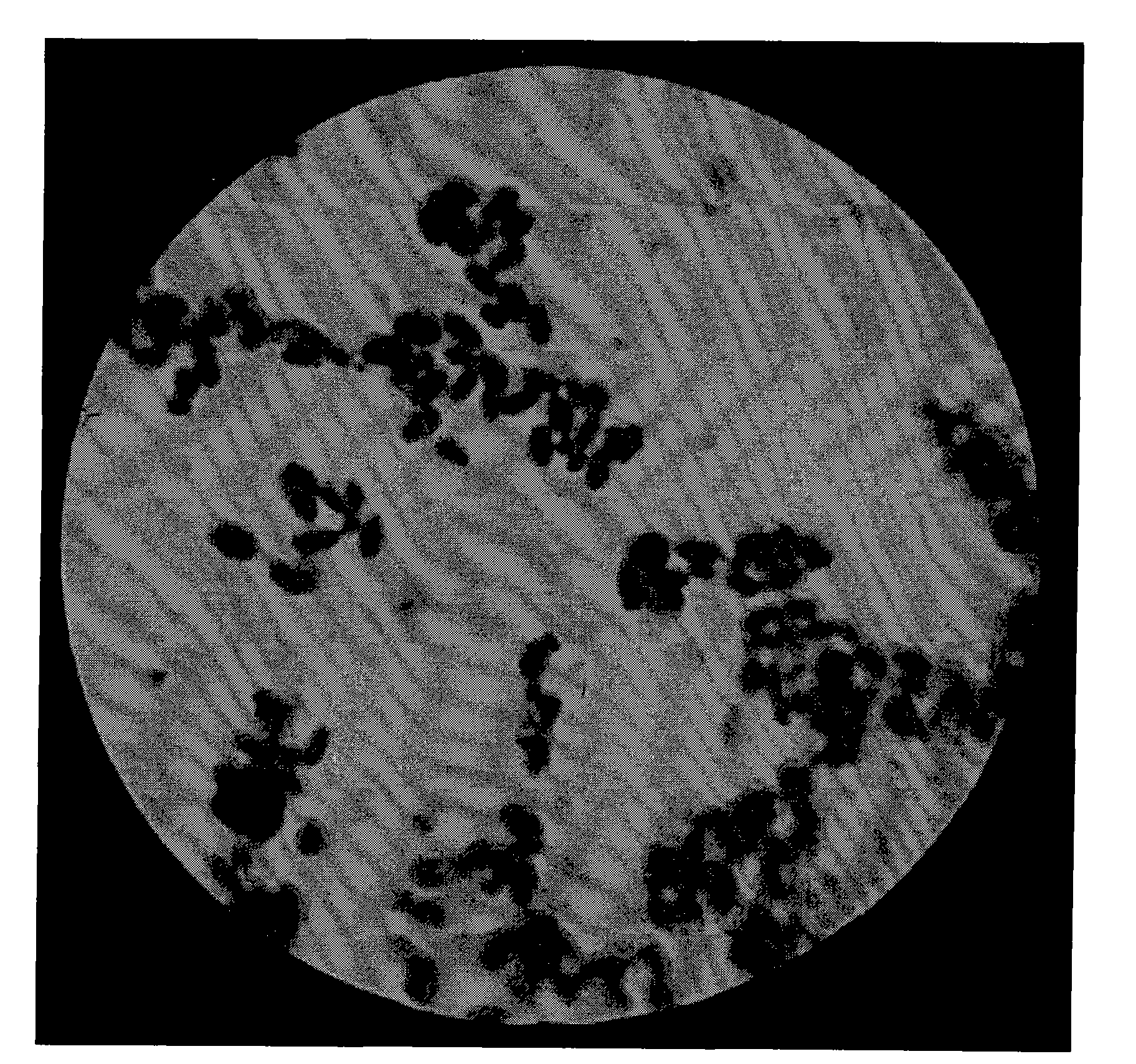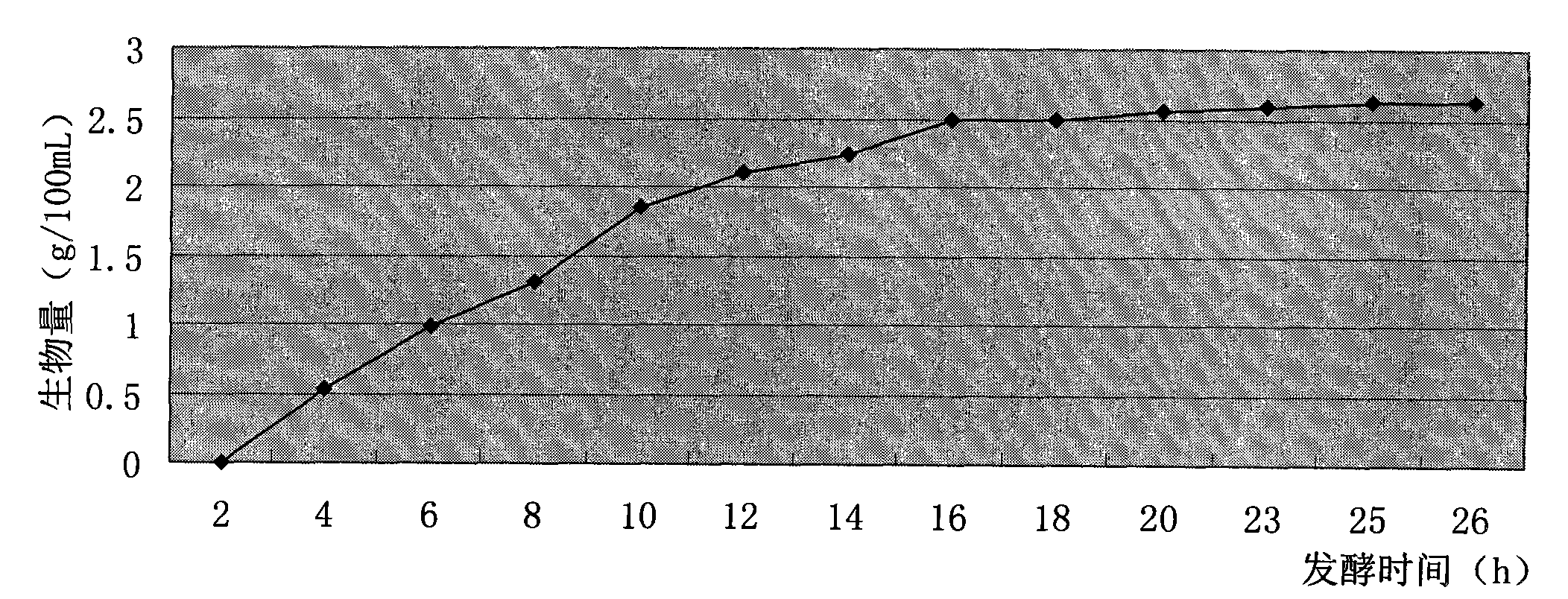Yeast with strong capacities of tolerating, enriching and converting organic selenium and application thereof
An organic selenium and yeast technology, applied in the field of yeast, can solve the problems of high production cost and lack of good bacteria, and achieve the effects of good stability and strong selenium enrichment ability.
- Summary
- Abstract
- Description
- Claims
- Application Information
AI Technical Summary
Problems solved by technology
Method used
Image
Examples
Embodiment 1
[0031] The screening of embodiment 1 bacterial classification
[0032] At present, the method of biological selenium enrichment is mainly the microbial conversion method. The microorganisms used for selenium enrichment include edible fungi, yeast and probiotics. The commonly used strain introduced in the literature is Saccharomyces cerevisiae, and Candida utilis is a high-biomass yeast adopted according to the suggestion of the company's internal expert committee. At the same time, Saccharomyces cerevisiae and Candida utilis are fungal strains that can be used in health food as stipulated by the Ministry of Health (see the "Regulations on the Declaration and Review of Fungal Health Foods" promulgated in 2005). Therefore, Candida utilis and Saccharomyces cerevisiae were determined as backup strains for screening. Mainly investigate the selenium enrichment, tolerance and biomass transformation ability of the strain.
[0033] 1 strain screening
[0034] 1.1 Test equipment
...
Embodiment 2
[0061] The screening of embodiment 2 culture medium
[0062] 1 Materials and methods
[0063] 1.1 Materials
[0064] Strain: Candida utilis (Candida utilis) CUM, which was deposited in China Center for Type Culture Collection on April 19, 2010, and its preservation number is: CCTCC M 2010090.
[0065] Medium for primary screening: Cha's medium, PDA medium, wort medium, bean sprouts medium.
[0066] Repeat medium:
[0067] (1) The medium screened out initially
[0068] (2) Add the essential elements needed for the growth of yeast to the medium screened out, that is, add 2% glucose, 1% NH 4 h 2 PO 4 , 0.0001% CaCl 2 , 0.3% KH 2 PO 4 , 0.0001% MnSO 4 , 0.1%Na 2 HPO 4 , 0.1% MgSO 4 ·7H 2 O, 0.05% peptone, 0.0001% FeSO 4 , 0.0001% ZnSO 4 , 0.1% foam enemy, adjust the pH to 6.0.
[0069] 1.2 Method
[0070] Fermentation in Erlenmeyer flasks was used as a comparative test, with 50mL / 500mL Erlenmeyer flasks, 8% inoculum, two parallels, 30°C shaker at 200rpm for 48h, ...
Embodiment 3
[0079] Embodiment 3 different selenium addition time effect test
[0080] In order to investigate the effect of adding sodium selenite on strain growth and selenium enrichment at different stages of strain growth, this experiment selected three time points at the initial stage of fermentation (0h), logarithmic growth stage (22h) and mature stage (30h). Sodium selenite was added to the fermentation broth until the selenium concentration in the culture broth was 20 μg / mL, and the culture was terminated after 46 hours. The test results are shown in Table 6.
[0081] Table 6 Effects of different selenium addition methods on strain growth and selenium enrichment
[0082]
[0083] It can be seen from Table 6 that the biomass of the strain obtained by adding selenium in the initial medium was the lowest, only 2.89g / 100mL, which indicated that the 20 μg / mL selenium concentration in the fermentation broth still inhibited the growth of the strain to a certain extent. Comparing the ...
PUM
 Login to View More
Login to View More Abstract
Description
Claims
Application Information
 Login to View More
Login to View More - R&D
- Intellectual Property
- Life Sciences
- Materials
- Tech Scout
- Unparalleled Data Quality
- Higher Quality Content
- 60% Fewer Hallucinations
Browse by: Latest US Patents, China's latest patents, Technical Efficacy Thesaurus, Application Domain, Technology Topic, Popular Technical Reports.
© 2025 PatSnap. All rights reserved.Legal|Privacy policy|Modern Slavery Act Transparency Statement|Sitemap|About US| Contact US: help@patsnap.com



